What to do in Djerba, Tunisia? Djerba is a Tunisian island perfect for those who want to enjoy holiday fun, swimming and spas. You can also enjoy activities, sights, excursions and good food. Here are our top tips!
Table of contents
Djerba in Tunisia
Djerba is known for its sun, swimming and spa. In the past, many charter planes flew directly from Sweden and here, and it is very possible that it will be so again. At the moment, you have to fly a little detour (we flew via Frankfurt and Tunis) to get to this gem!
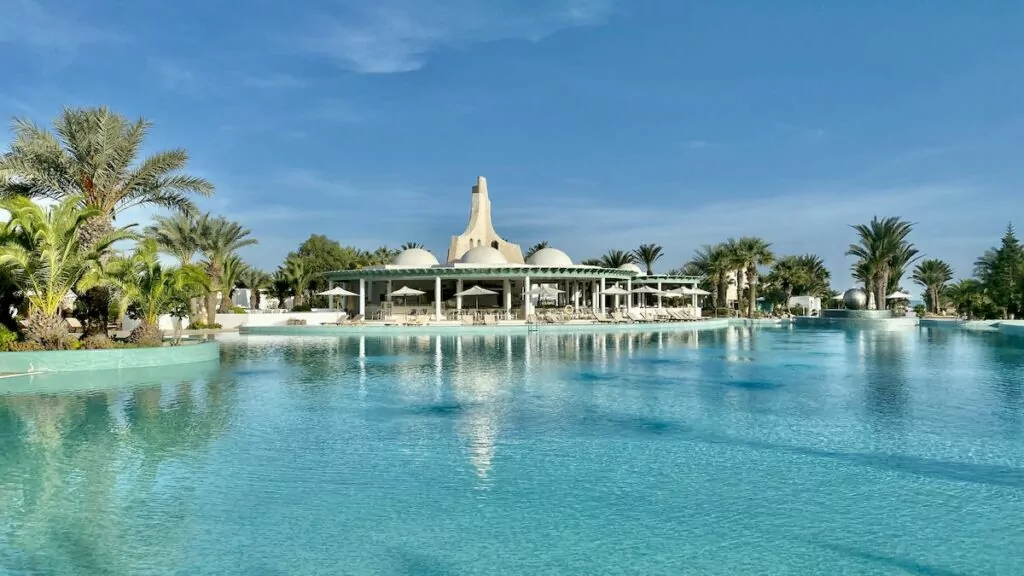
Djerba is located in the Mediterranean Sea, off the coast of Tunisia. The island is just over 50 kilometres south of the capital Tunis.
What can you do in Djerba?
So what can you see and do on Djerba? The island is popular for sunbathing and swimming, but there are plenty of other things to do. We've put together a list of our top tips here.
1. relax in a holiday hotel
Many people travel to Djerba first and foremost to sunbathe and relax in a holiday hotel. Many hotels are located on the eastern side of the island, where you can access beautiful beaches, while enjoying the hotel's pools.
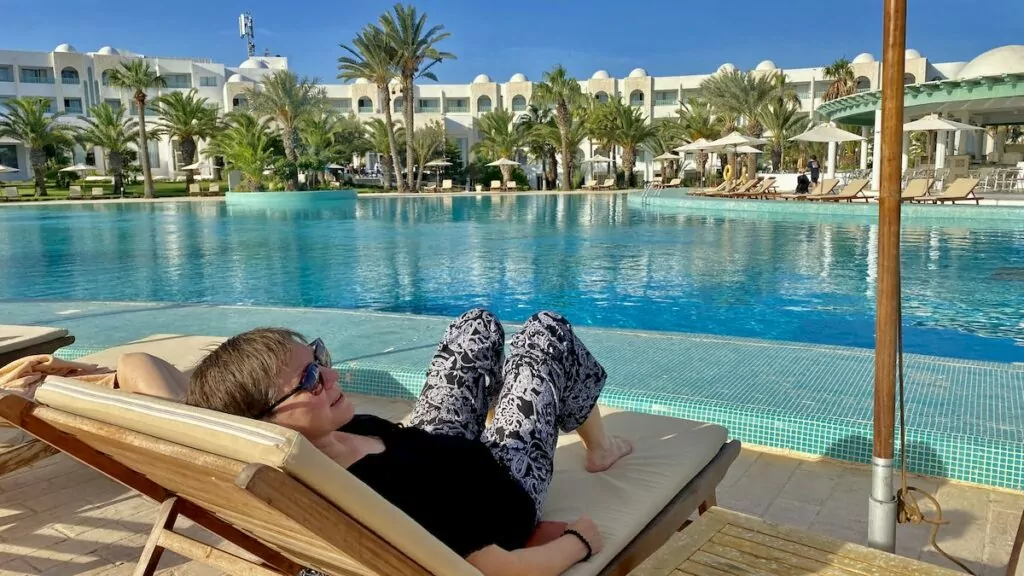
We stayed a few days at the Palm Beach Palace hotel, where we enjoyed ourselves very much. The room was large and fresh, there was a nice bar, it was close to the beach and the pool area was very inviting. Buffet is not really our favourite, but there was a lot to choose from in the large buffet restaurant.
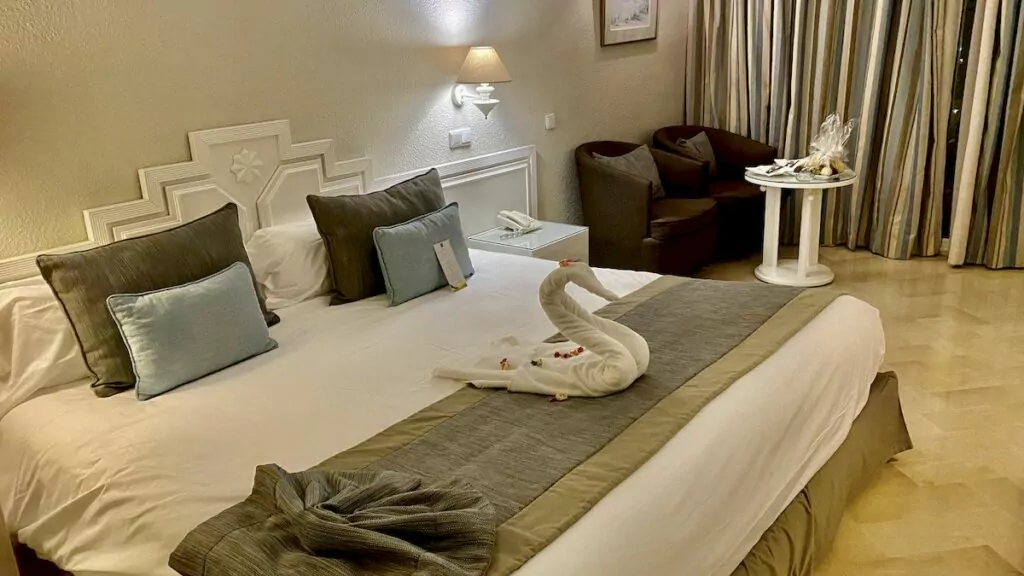

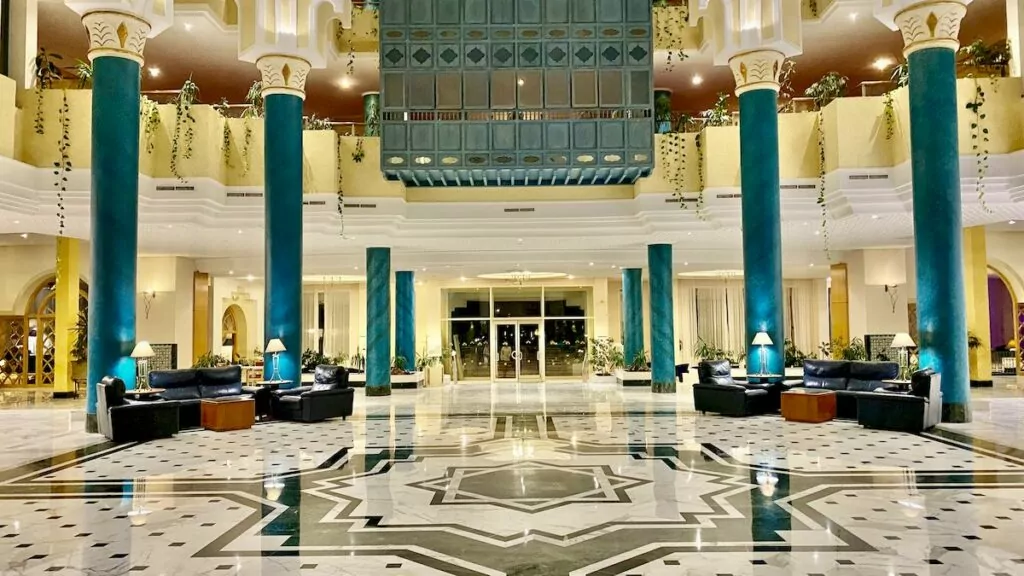
2. Experience Djerba Beach
On the eastern side of Djerba there is a long sandy beach with soft fine-grained sand. We visited the beach below our hotel Palm Beach. Along the same coast you will also find the beaches Plage de la Séguia and Sidi Maharès Beach.
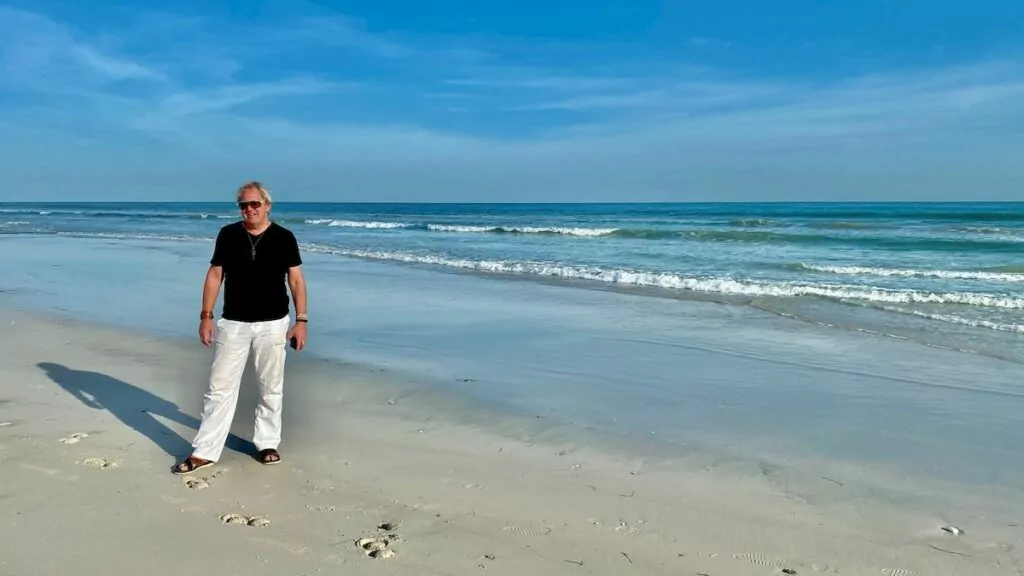
3. try thalassotherapy
Thalassotherapy is a treatment using sea water. Both cold and warm sea water can be included, as well as sea air, mud, sand and algae. According to many, the treatment can be beneficial in reducing stress and pain, activating blood flow and helping to keep the skin healthy, among other things.
Often treatments can be combined with classic spa treatments and traditional massages. On the island of Djerba, for example, you can visit the Ulysse Djerba Thalasso, which we can recommend for good and relaxing treatments.
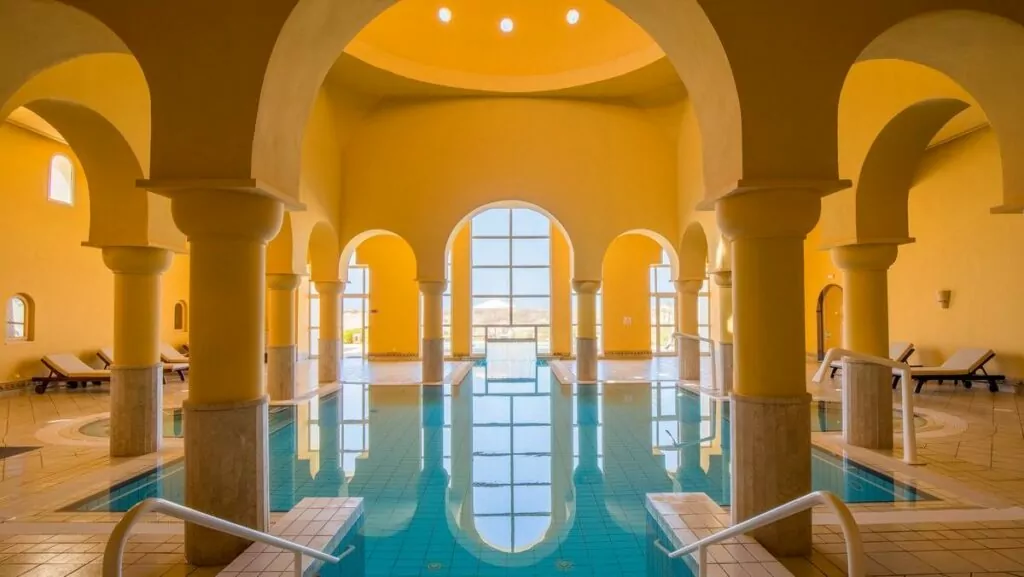
4. Stroll in the Houmt Souk medina
Houmt Souk is the main town on Djerba, and is best known for its large market. Here you can browse countless shops and stalls selling everything from clothes and shoes to leather goods, ceramics and carpets.
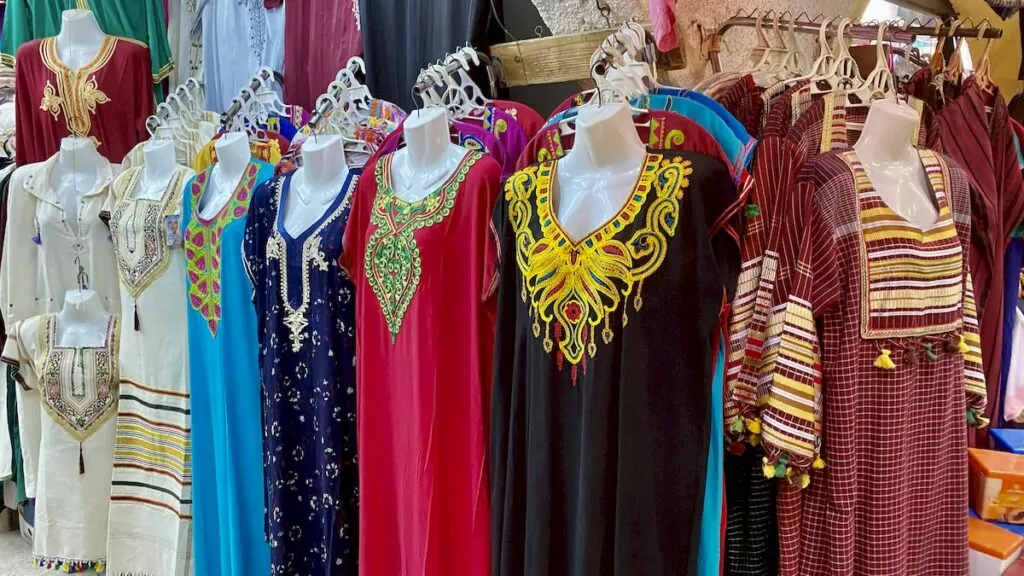
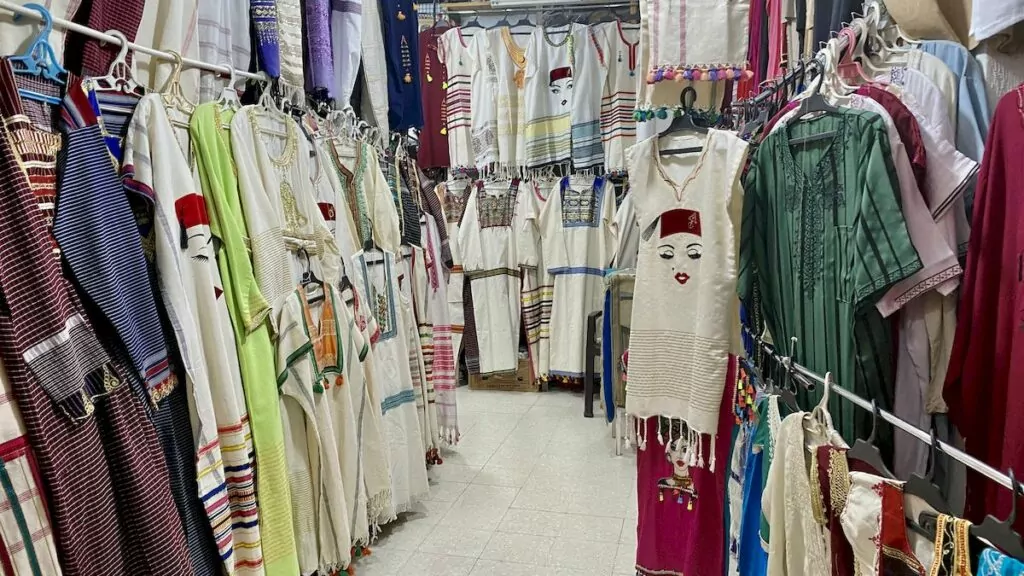
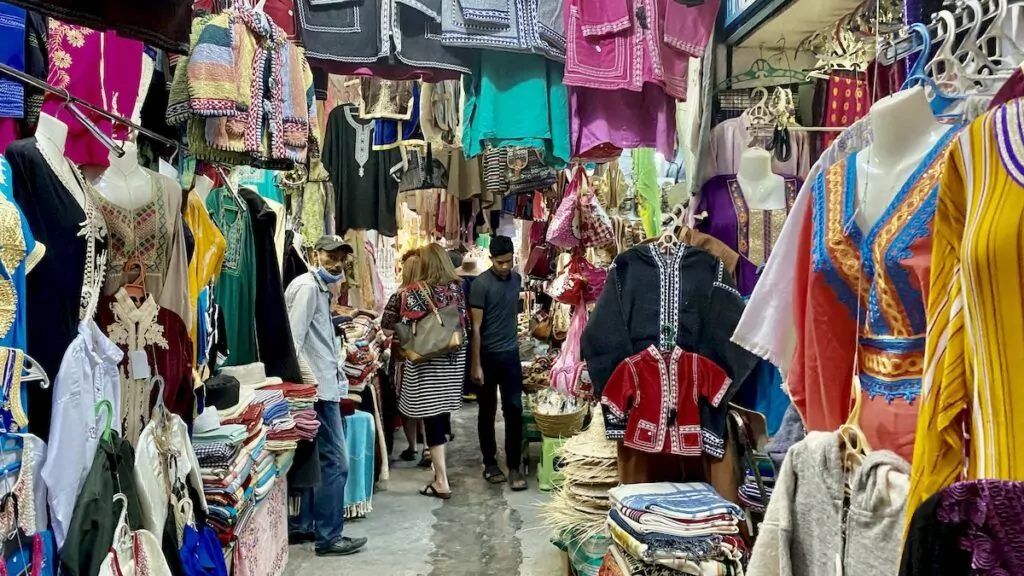
Was there any shopping for us then? Yes, one pair of shoes each had to leave. The price was so low that we didn't bother to haggle.

5. buying fish at auction
In Houmt Souk you will of course also find fruit, vegetables and fish. We visited the fish hall at the wrong time to experience the fish auction, but if you arrive at the right time, you can hear the buyers bidding on the fish, like in a classic furniture auction. Or you can bid yourself - and then take the fish to a nearby restaurant to have it cooked.
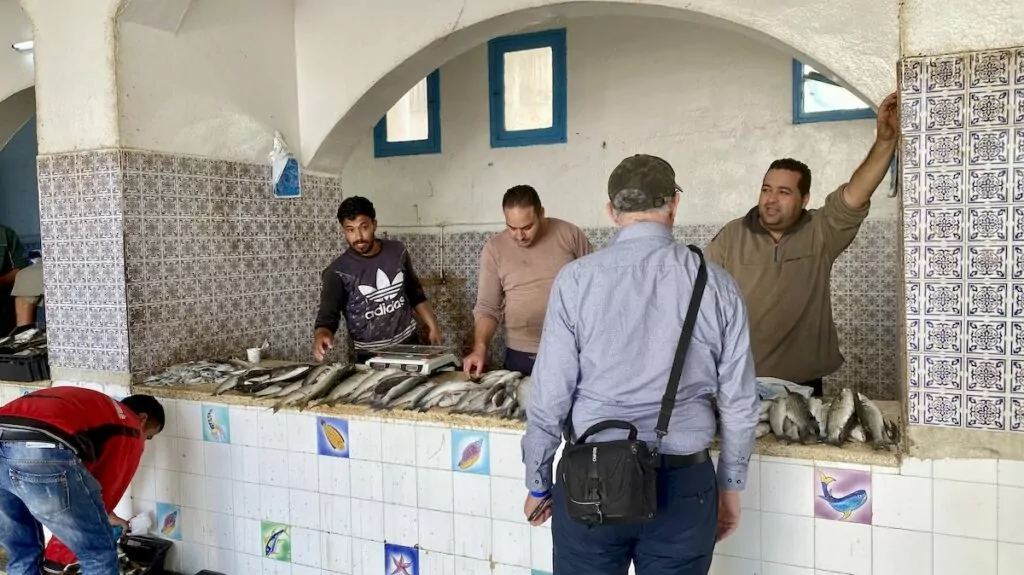
6. shopping for ceramics
If you want to buy something typical of Djerba, take the opportunity to buy ceramics. Plates, saucers and carrots of all kinds are available at the market, but also in many different shops around Djerba.
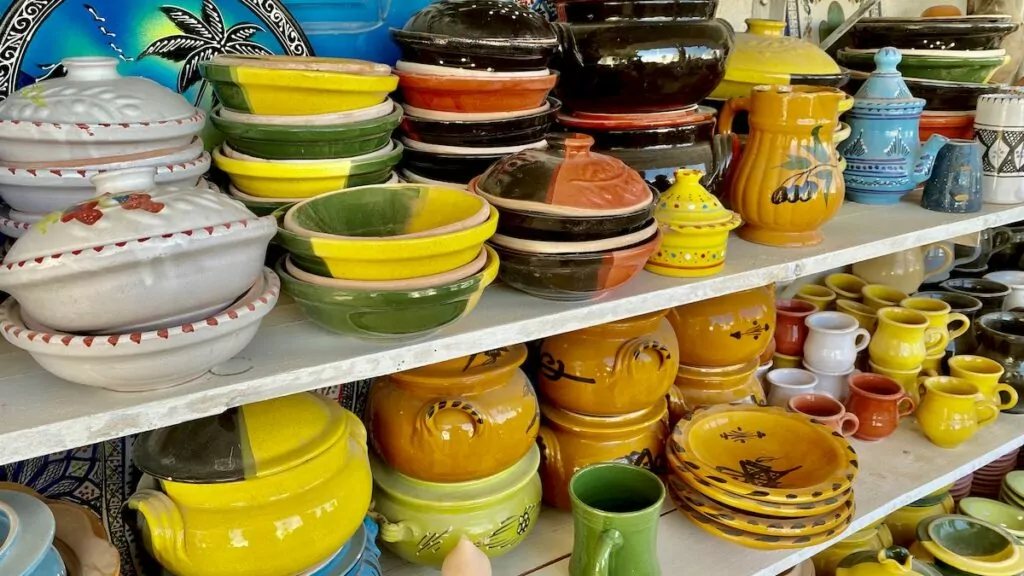
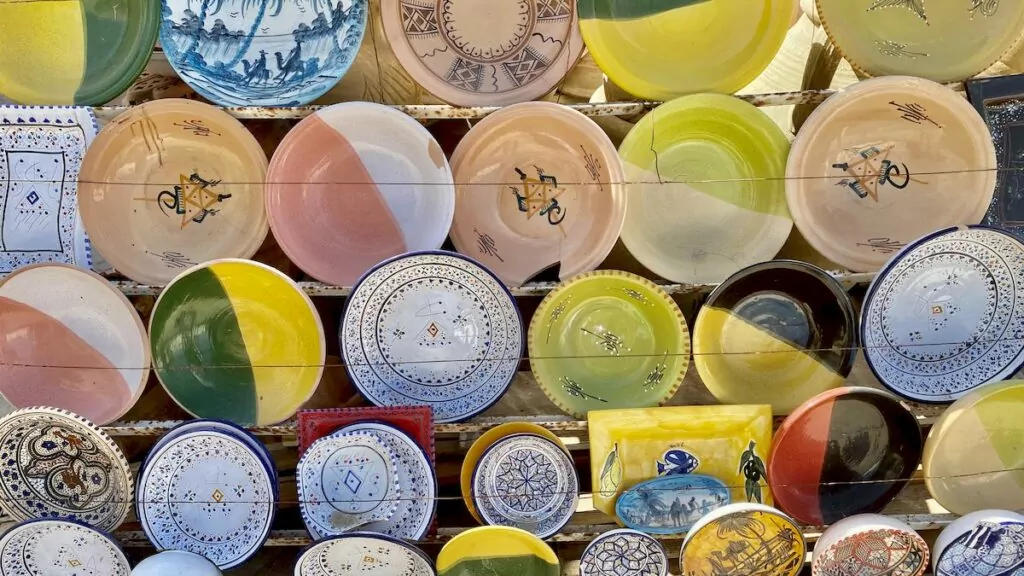
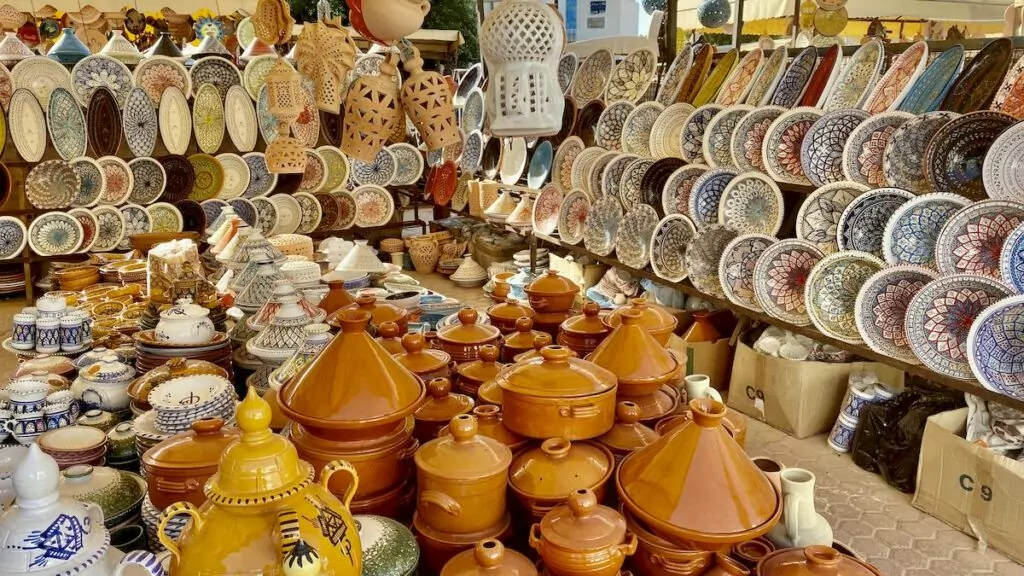
7. Visit the El Ghriba synagogue
An interesting thing to do in Djerba, if you like sightseeing, is to check out the El Ghriba synagogue. Djerba is home to over a thousand Jews, making it one of the largest Jewish neighbourhoods in Tunisia. The El Ghriba synagogue began construction in the late 19th century, on the site of a synagogue dating back to the 5th century.
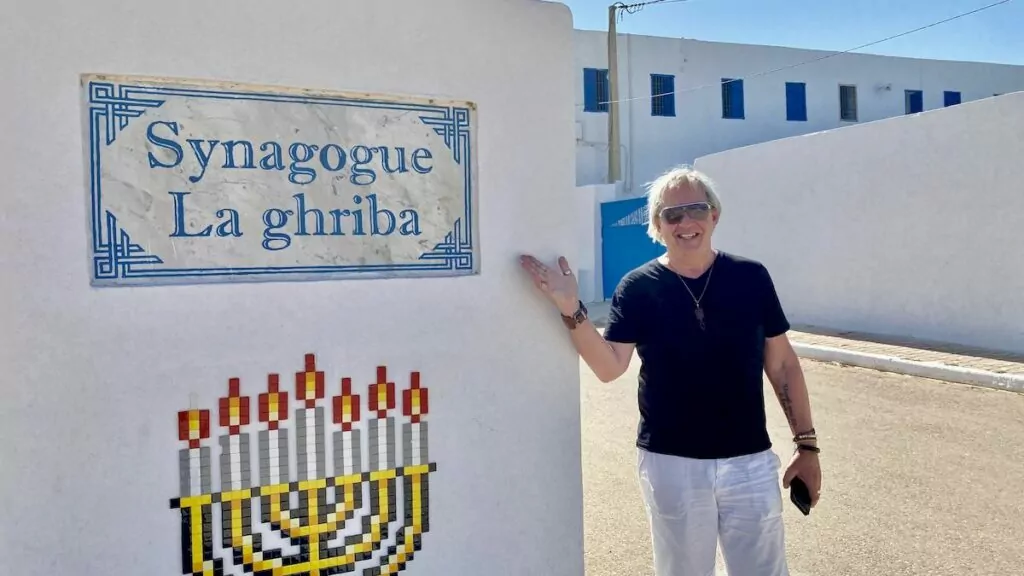
The synagogue is the oldest in Tunisia and is also a place of pilgrimage. Tourists are welcome to visit the synagogue, and shawls and kippahs (men's headgear) are available to borrow so you can dress appropriately.
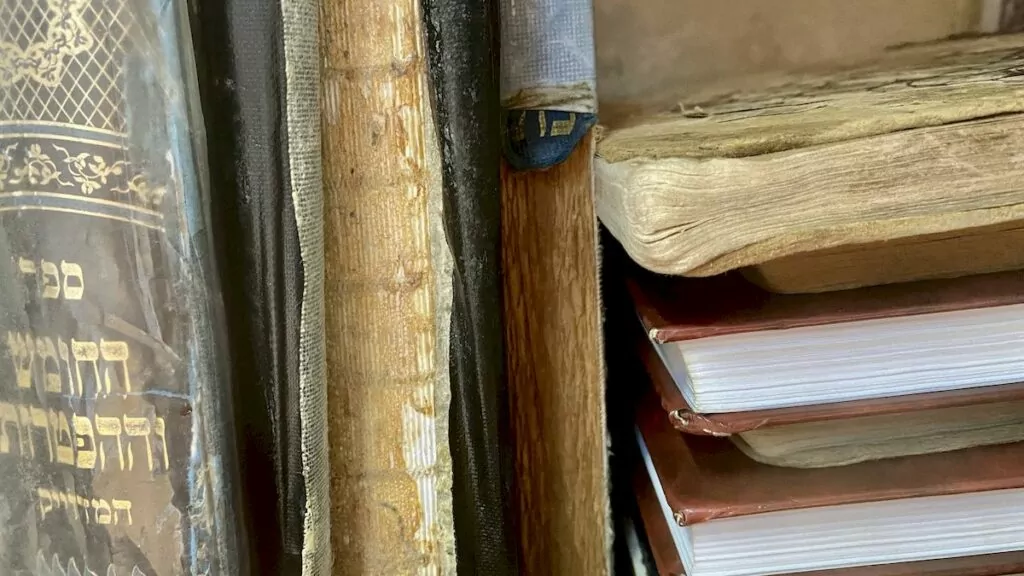
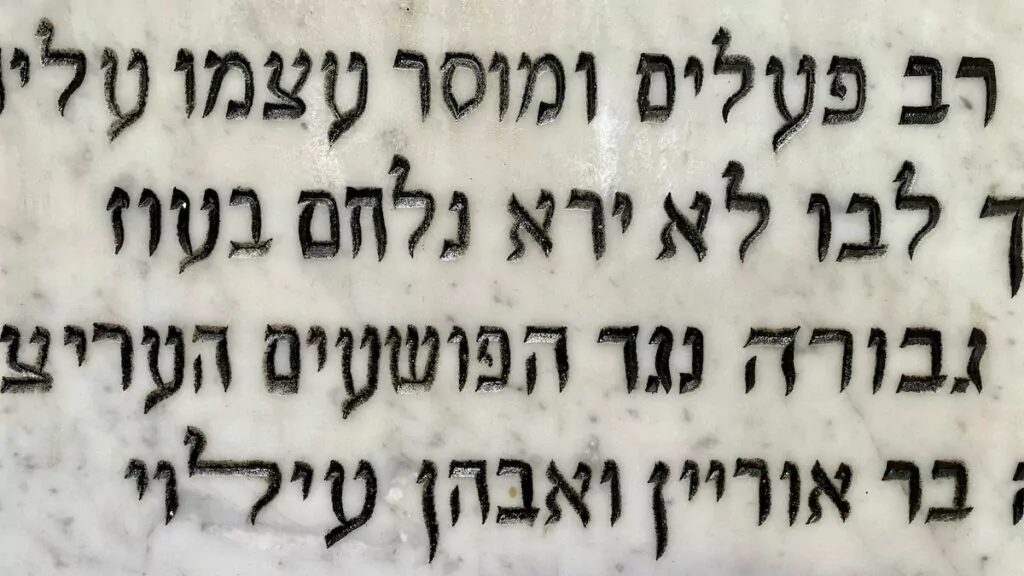
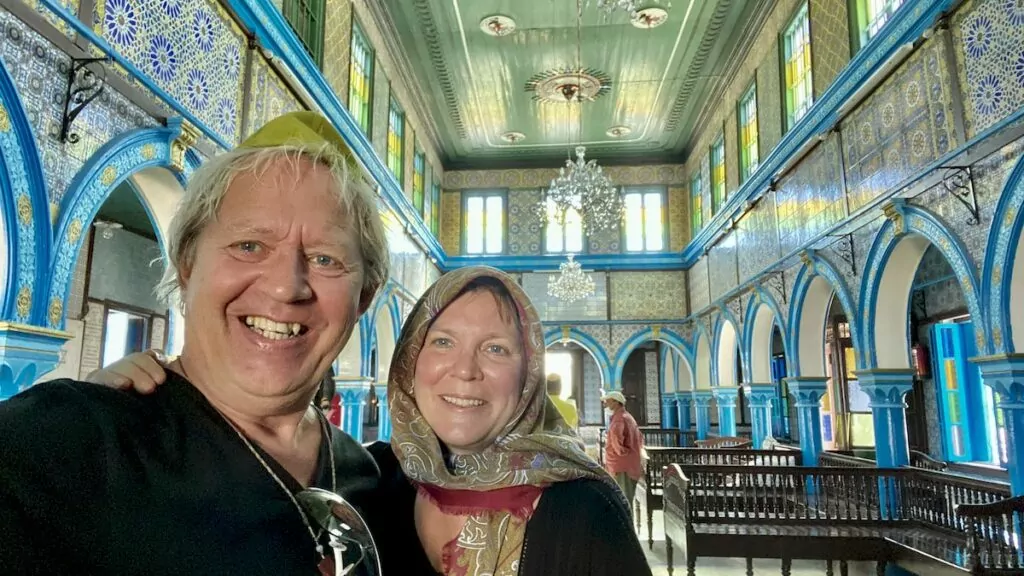
8. See street art in Djerbahood
Djerbahood, in the village of Erridh, offers charming neighbourhoods and fantastic street art. The neighbourhood itself is beautiful, with white houses, blue gates, colourful flowers and nice little shops. You can also see street food from more than 150 artists from 30 countries. It all stems from an art project carried out in 2014, and the neighbourhood has since evolved with more and more paintings.
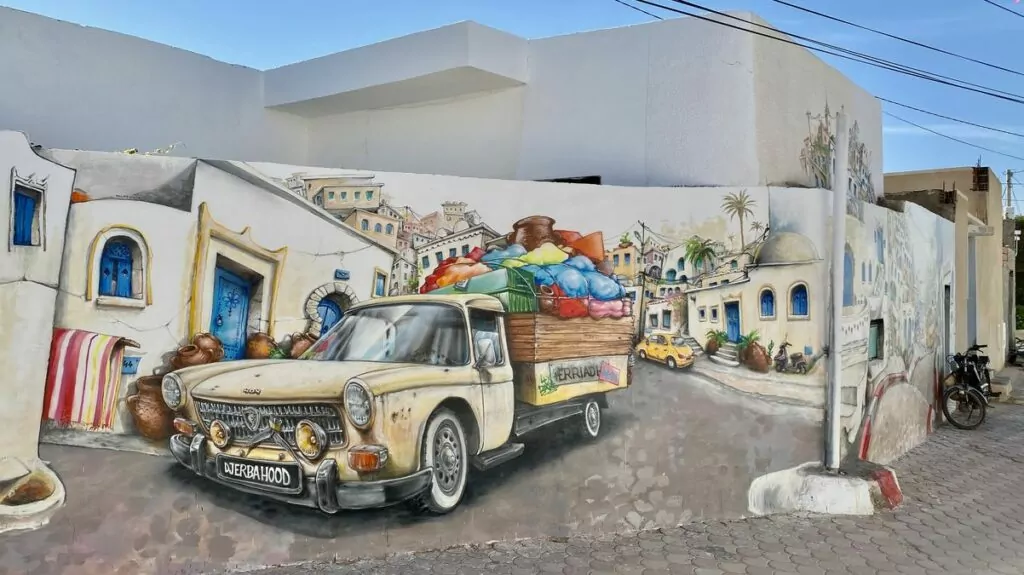
9. Learn about culture at the Guellala Museum
Housed in a beautiful white building, the Guellala Museum (Musée de Guellala) tells the story of the traditions and cultural history of Djerba.
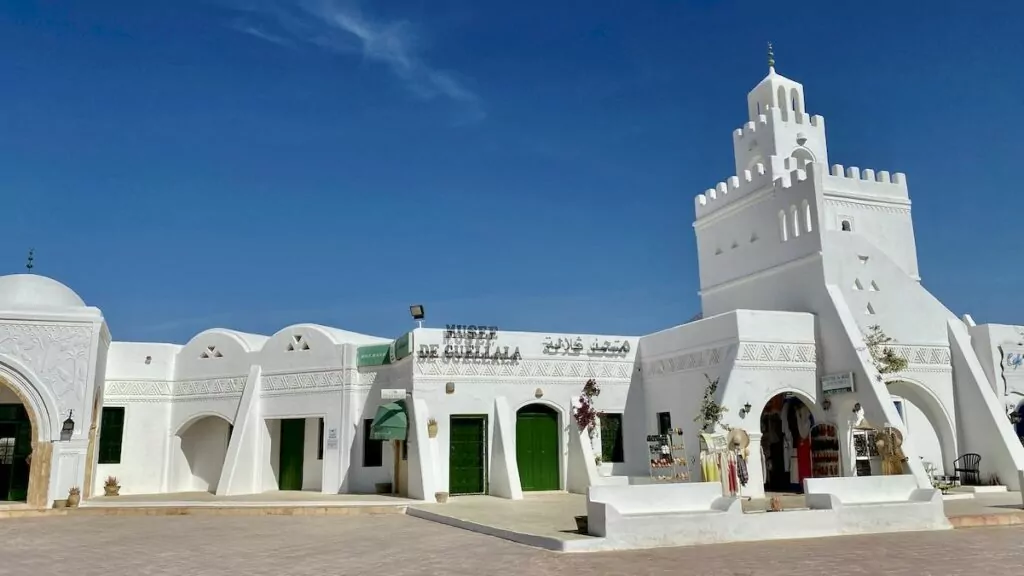
You walk around different displays that tell you about everything from birth to marriage. We liked this easy-to-understand museum, with colourful displays and signs with brief information in English.
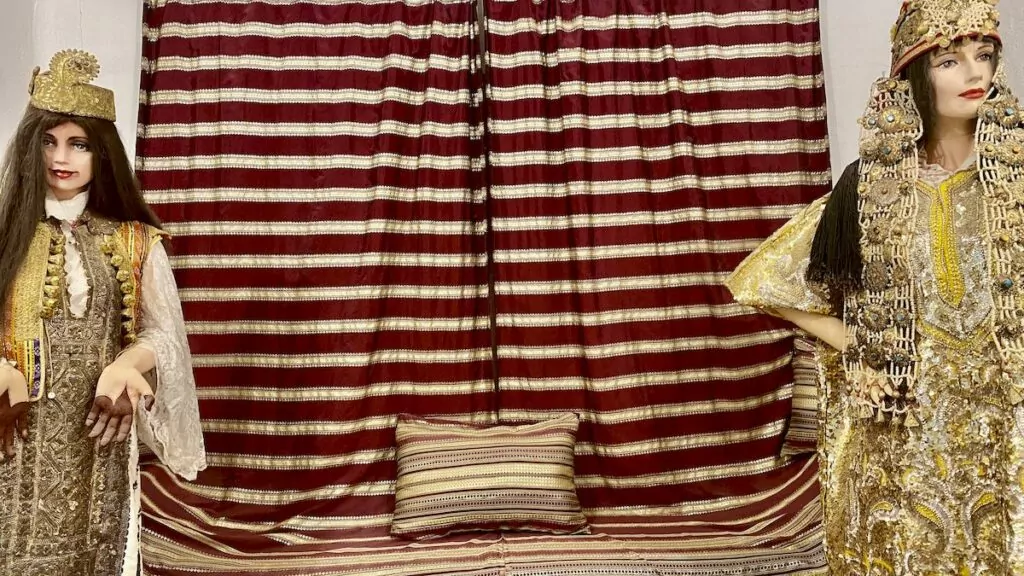
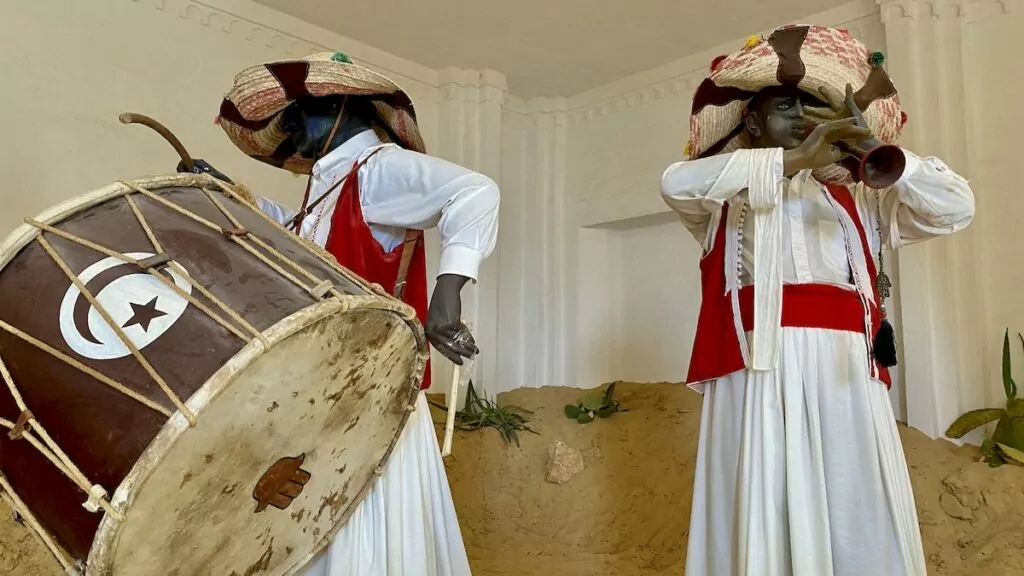
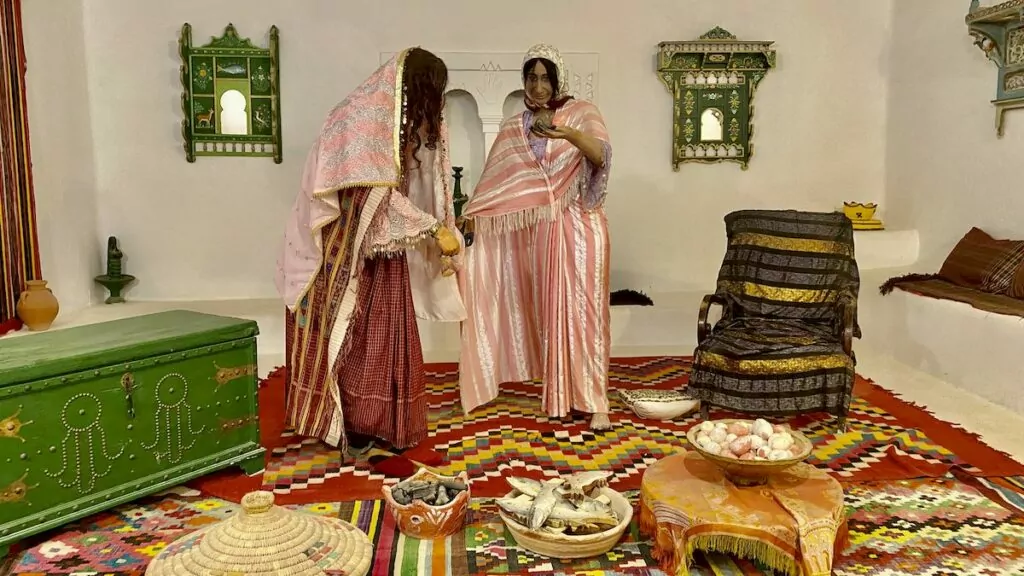
10. Meet crocodiles at Parc Djerba Explore
If you want to see crocodiles, head to Parc Djerba Explore. There are no less than 400 Nile crocodiles here. The area is green and beautiful, and it is truly fascinating to see this large number of impressive reptiles.
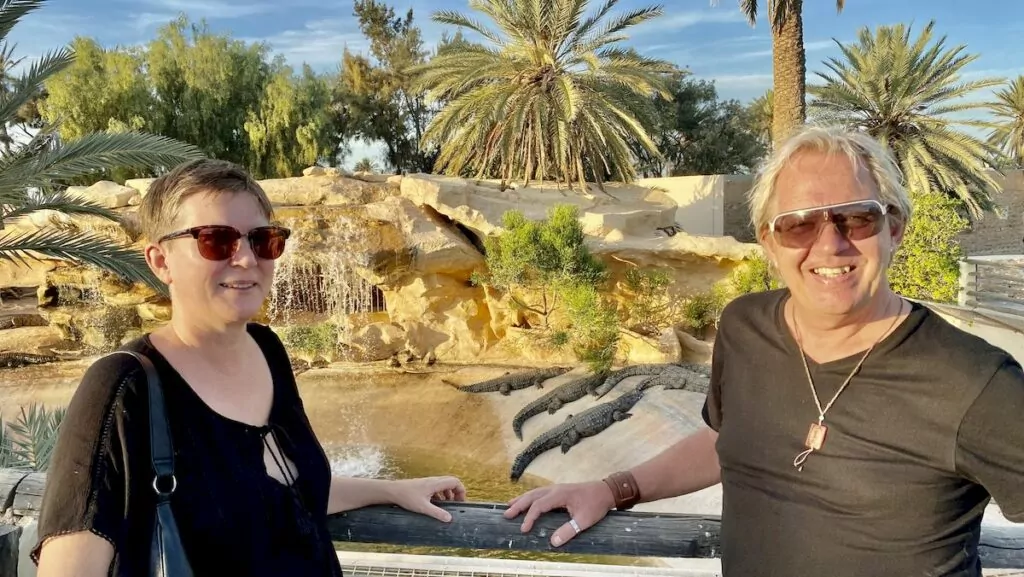
The crocodiles are the most impressive, but there are also fine lizards and large turtles to watch.
11. visits Lalla Hadria Museum
The Lalla Hadria Museum is right next to the crocodile park and belongs to the same organisation, and both can be visited with the same entrance fee. The museum displays a fascinating collection of artefacts from Eastern cultures, collected by a private individual. The information signs are so far only available in Arabic and French, but the staff told us that English is in the pipeline.
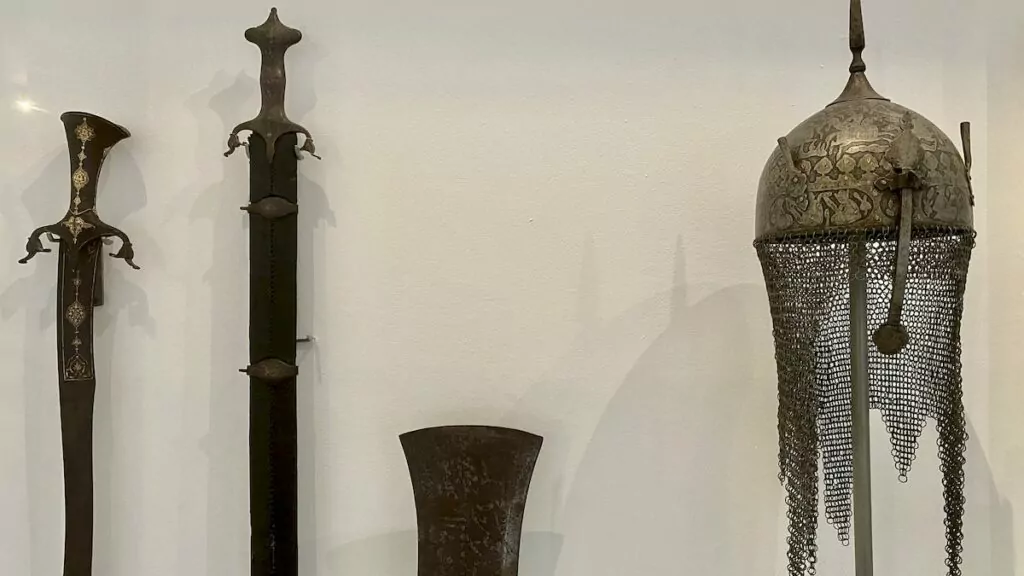
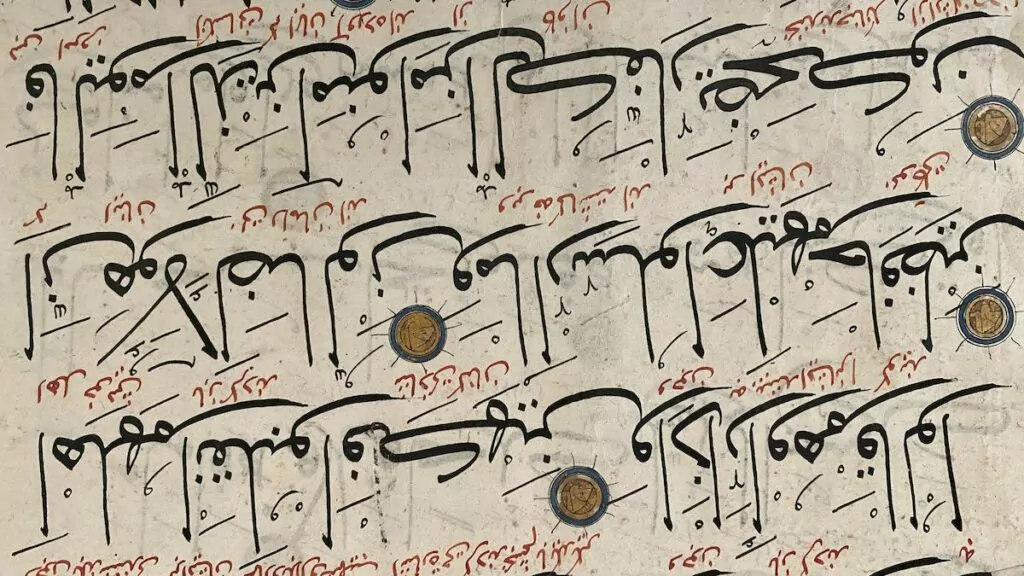
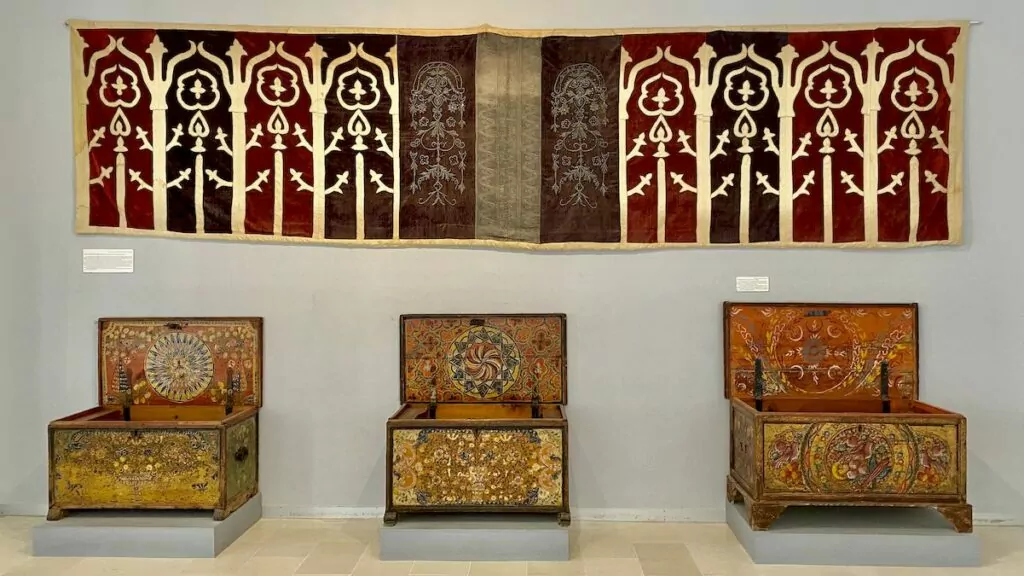
12. Eat seafood at the Haroun restaurant.
Restaurant Haroun is located in the harbour of Houmt Souk. Here we had a seafood lunch, which was both fantastically good and fantastically nice, with a lovely view.
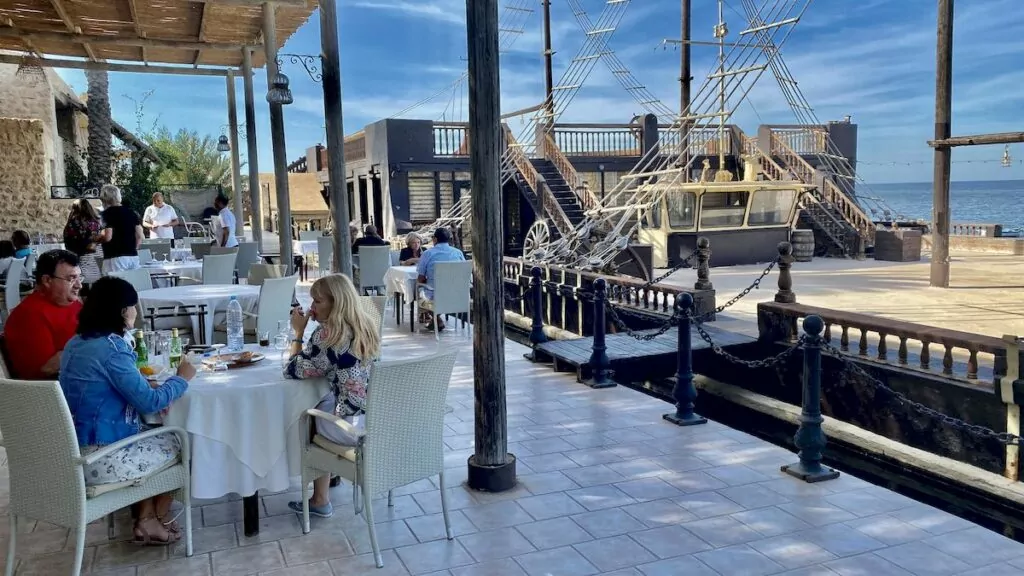
As usual in Tunisia, several small, tasty starters were served. Then we had mussels, and finally the main course with seafood. Very good!
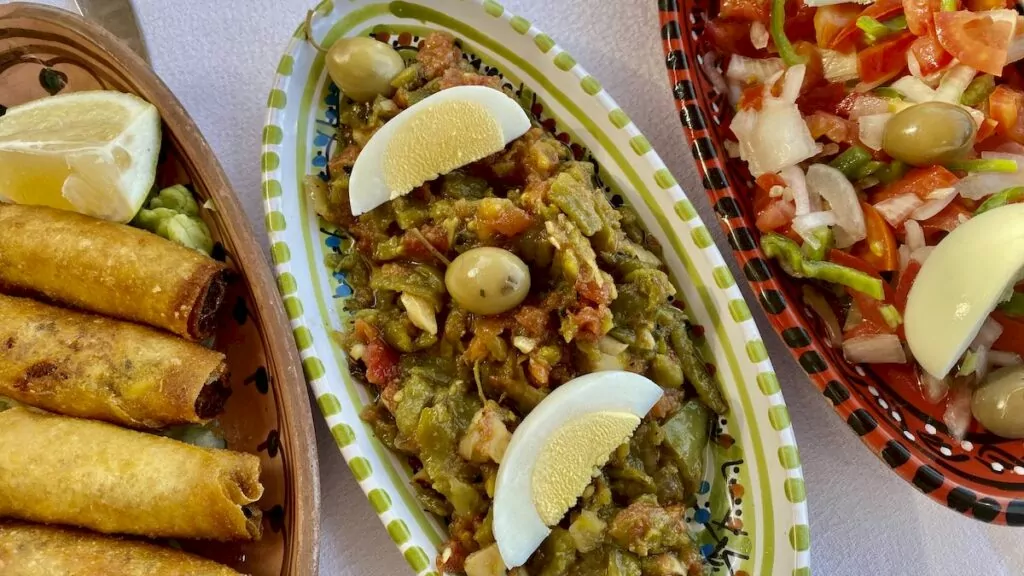
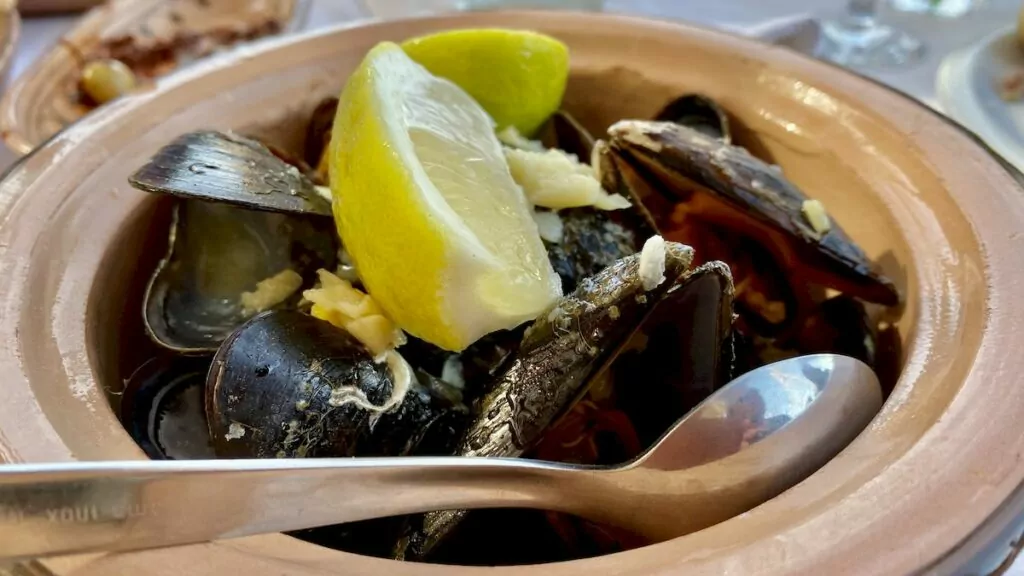
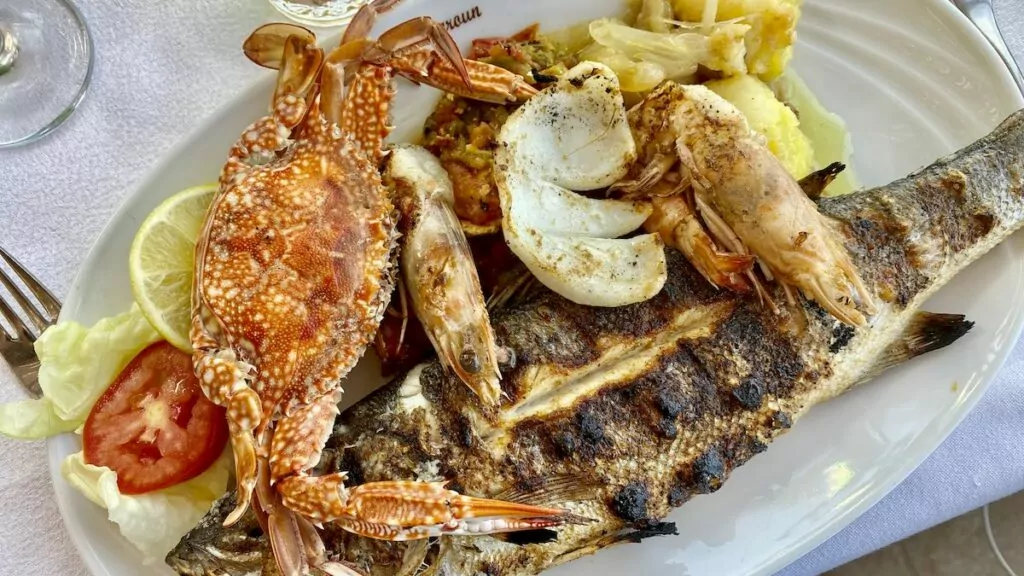
More to see and do in Djerba
There is, of course, more to see and do on Djerba than what we have mentioned. It is popular to play golf on the golf courses here, and we also saw many people riding horses by the beach and over a shallow area. In Houmt el Souk there is also the old ancient castle Bordj el Kebir, which may be worth a look.
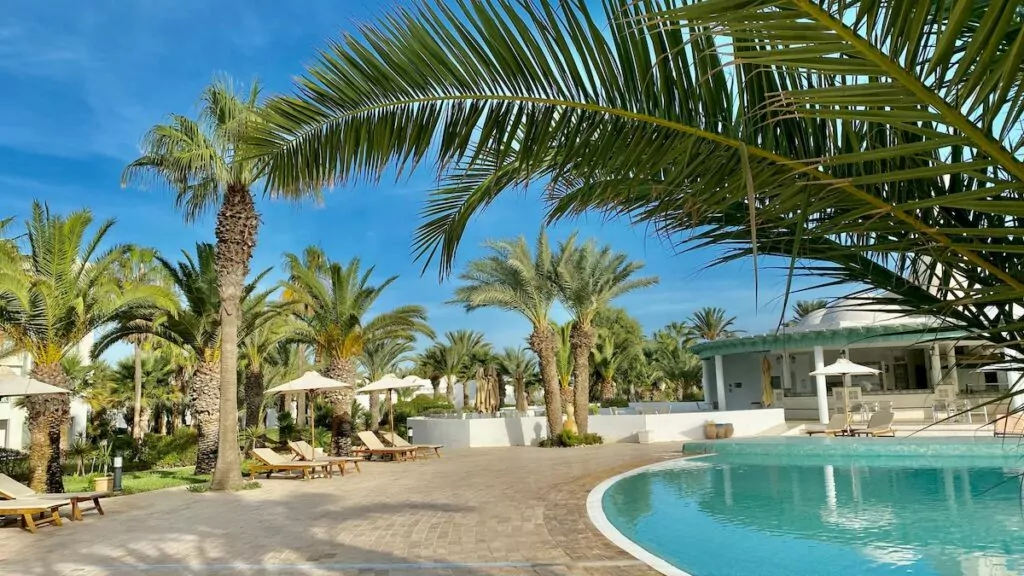
More things to see and do around Djerba
Starting from Djerba, you can make an excursion to Matmata, where you can see traditional Star Wars cave houses and filming locations. Continuing a little further, you can visit Douz, which offers desert adventures in the form of camel riding, tours on quad bikes or overnight stays in the Sahara. Also, don't miss to try different Tunisian dishes!
Djerbahood on the island of Djerba - amazing street art in Tunisia
Djerbahood on the island of Djerba in Tunisia offers charming neighbourhoods and amazing street art....
Matmata in Tunisia - cave houses, Star Wars, viewpoints
Matmata in Tunisia is a small Berber village in southern Tunisia, where people have traditionally...
Beer and wine culture in Tunisia
Guest writer: Jonathan Gharbi de Maré You might think of sunny beaches, golf and good food, but...
What to eat in Tunisia - 16 Tunisian dishes and specialities
What to eat in Tunisia? We list 16 Tunisian specialities and share our experiences...
Facts about Tunisia - 30 things you (may) not know
Facts about Tunisia! Tunisia is known for its Roman ruins, among other things, and for...
Camel riding in Tunisia - an island tour at the gateway to the Sahara
Camel riding in Tunisia, what is it like? There are lots of camels (or dromedaries) in...
What to do in Hammamet, Tunisia - 13 tips
What to do in Hammamet, Tunisia? Hammamet is a Tunisian Mediterranean resort that is...
Tozeur in Tunisia - oases, adventure and Star Wars
Located in the western part of Tunisia, Tozeur serves as a starting point for desert adventures and...
What to do in Tunisia - 25 sights and experiences
What to see and do in Tunisia? This glorious Mediterranean country is perfect for sunbathing and...
Boat trip to the Kuriat Islands in Tunisia - excursion from Monastir
Last summer we went on a boat trip to the Kuriat Islands, located off Monastir in Tunisia....
Living in tents in Tunisia - under the stars in the Sahara
Living in a tent in Tunisia is an experience. We stayed one night in a...
Carthage in Tunisia - archaeological site and World Heritage Site
Carthage is an archaeological site in Tunisia, and a neighbourhood outside the capital Tunis. Today,...
Quad biking in Tunisia - speedy experience in the Sahara
Quad biking in Tunisia is a wonderful experience. We went on a...
Visiting El Djem in Tunisia - Amphitheatre and World Heritage Site
Visiting El Djem in Tunisia is fascinating! We have just spent a week in...
Thalassotherapy in Tunisia - Visit to two Thalasso & Spa
We have tested thalassotherapy in Tunisia, which is a treatment that utilises...
Alleys and bazaars in Tunis - shopping and people watching
We are still on the ground in Tunisia, but our journey is coming to an end...
Sidi Bou Said in Tunisia - the blue and white city
Sidi Bou Said in Tunisia is a small Mediterranean town known for its charming neighbourhoods and...
Things to do in Sousse, Tunisia - 15 tips
What to do in Sousse, Tunisia? Sousse is a delightful and exciting holiday resort...
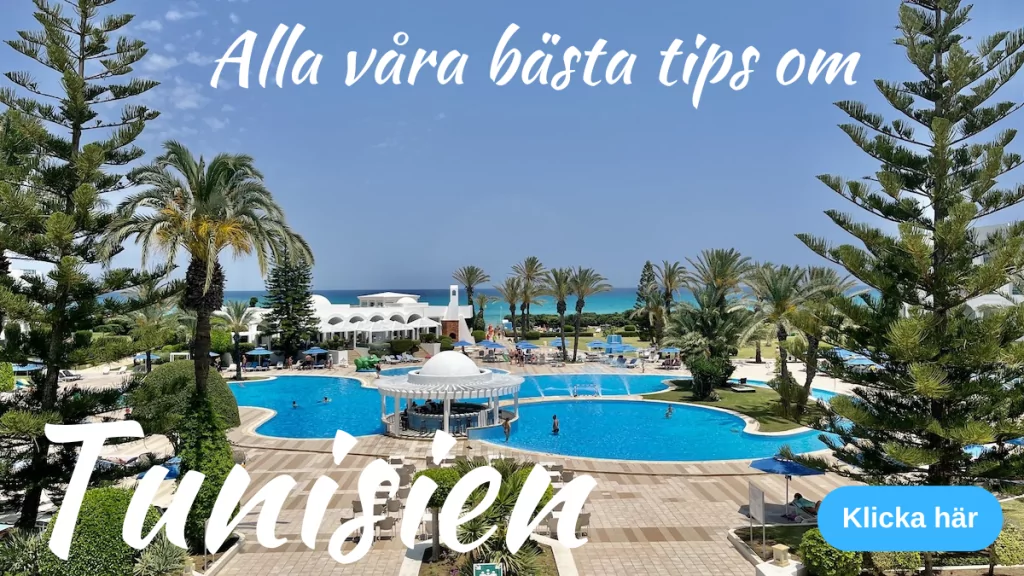
More tips for things to do in Djerba?
Have you visited Djerba, or perhaps another place in Tunisia? Do you have more tips on things to see and do in Djerba?
Facts about Djerba in Tunisia
- Country: Tunisia
- Name: Djerba, also spelled Jerba, Jarbah or Jerbah
- Cities: Houmt Souk and Midoun
- Language: Arabic, French and Berber languages (many also speak English, especially in tourist areas).
- Religion: Islam (including Ibadism) and Judaism
- Industries: Cultivation of grapes, figs, peaches, dates, olives and more, as well as fishing for sponges and oysters. Tourism is another important industry, including the sale of handicrafts.
Travelling to Djerba
- Flight: Flights operate regularly from the capital Tunis as well as from various international destinations. Charter companies have previously flown directly from Sweden, which may be resumed again. Please read about our different flying experience, with view from the cockpit.
- Car: Driving from Tunis takes just over 6 hours. The island is connected to the mainland by a seven kilometre long stone bridge, originally built by the Romans. Car ferries also run between the mainland and the island.
History on Djerba
- Antiquity: The island was called Meninx and, according to the Odyssey, was the island of the lotus eaters. The Greek historian Skylax called it Bracheion. Ruins and sculptures have been preserved from the former capital of Meninx.
- 16th century: Djerba served as the headquarters of the pirate and later Ottoman admiral Khair ed-Din Barbarossa.
- Late 19th century: Construction of the El Ghriba synagogue began. However, there has long been a synagogue on the site.


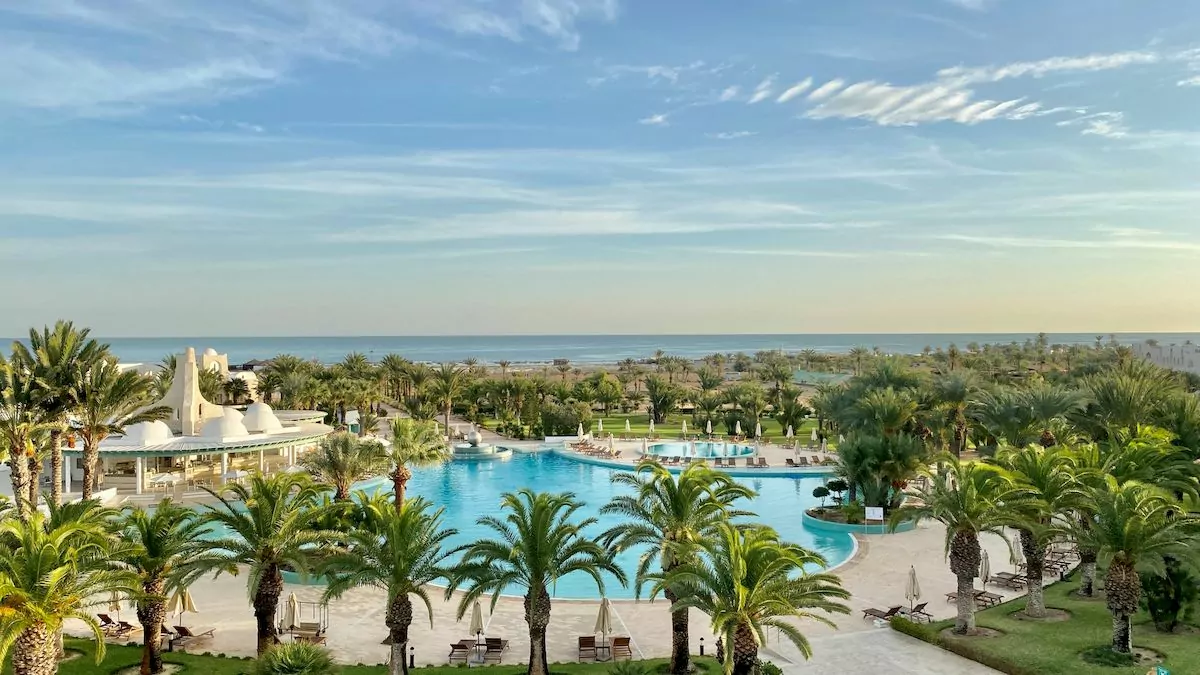






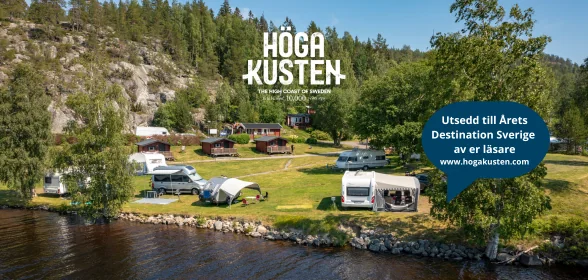


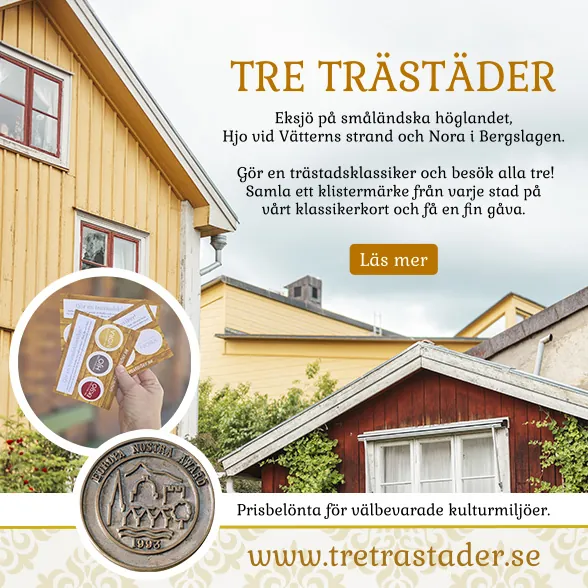
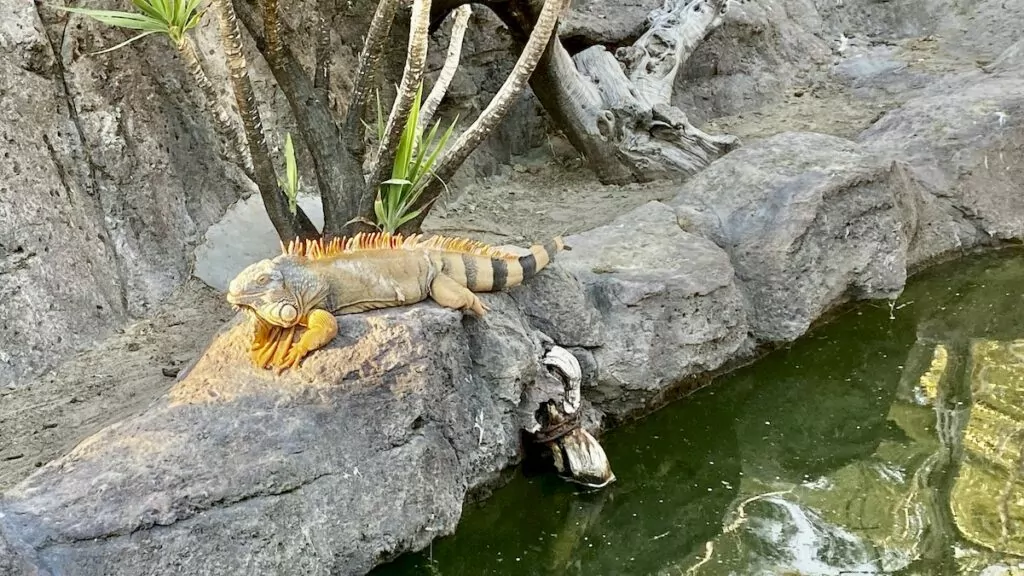
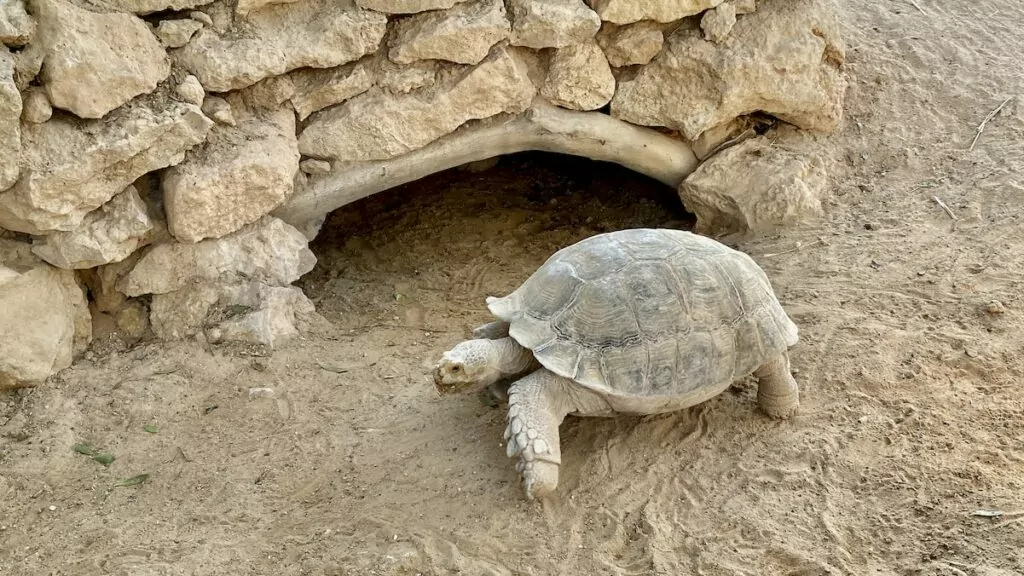
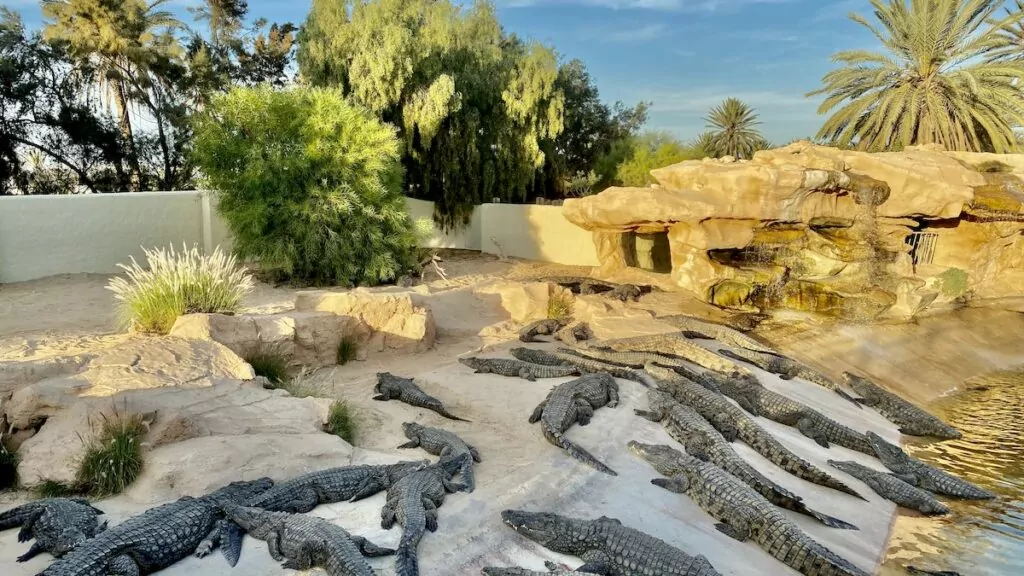
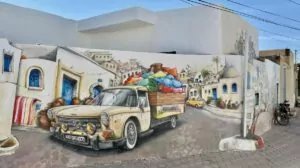
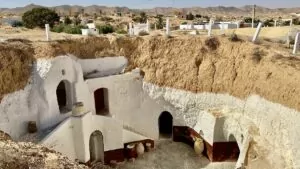
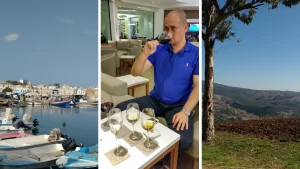
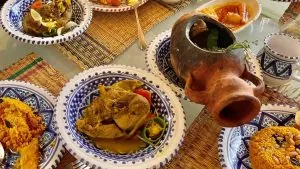
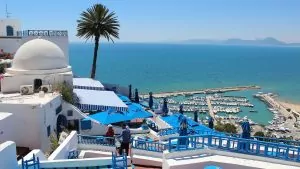
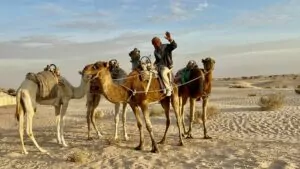
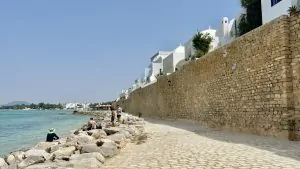
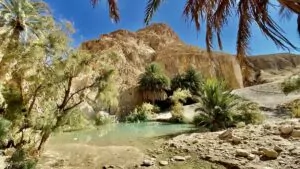
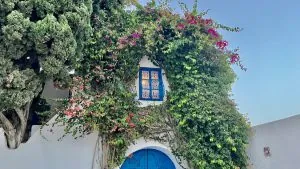
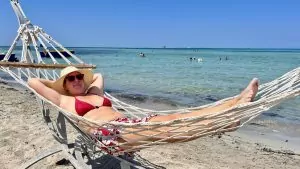
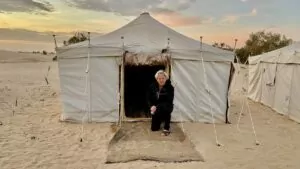
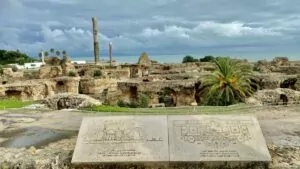
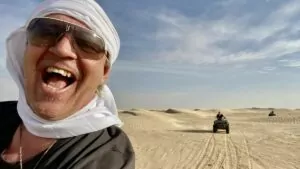
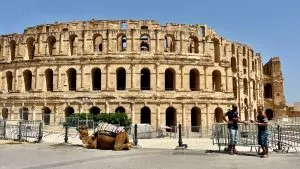
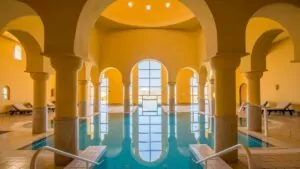
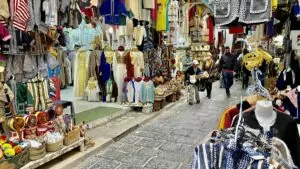
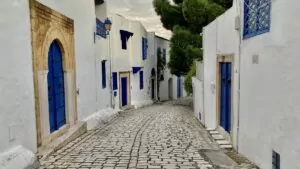
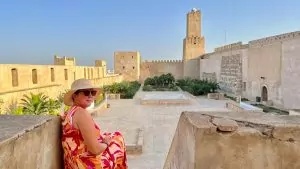
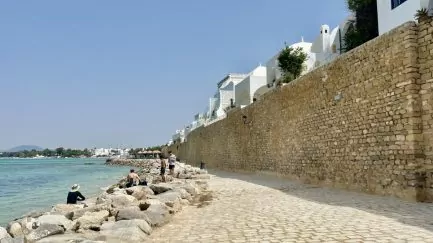
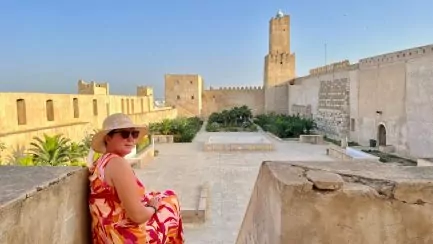
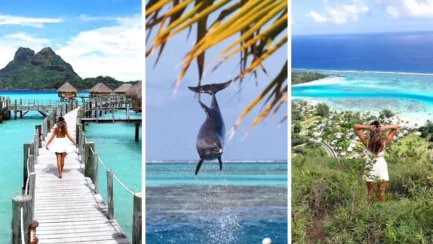
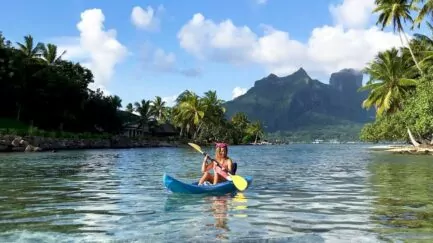
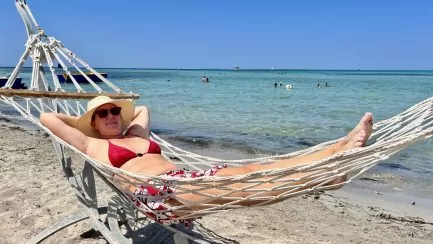
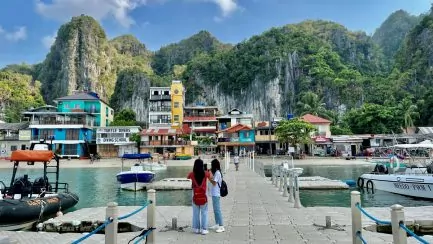



BP says:
This trip must have been one of the most luxurious and varied that you've done, right?!
The hotel looks like a luxurious palace, as the name confirms. Love the Souks. There is always something to take home with you. The street art is the most delicious I've ever seen, and the food - MUMS!
Then I did not know that there was a "Jewish colony" in Tuscany. Nor did I realise that you had to wear "appropriate" clothing. In Tel Aviv, there was no need for a kippah or shawl in the synagogues.
I am not a fan of crocodiles, which by the way were very tight there. But I love turtles so I was happy anyway;-)
09 December 2021 - 19:55
Helena says:
Maybe! In any case, it was a fantastic trip! 🙂 We also became extremely fond of the street art, perhaps the best street art place we have ever visited. Have not visited very many synagogues actually, so I'm not sure how it usually is. I know that Peter could borrow a kippa in Budapest as well, but I can't remember wearing a shawl?
10 December 2021 - 16:24